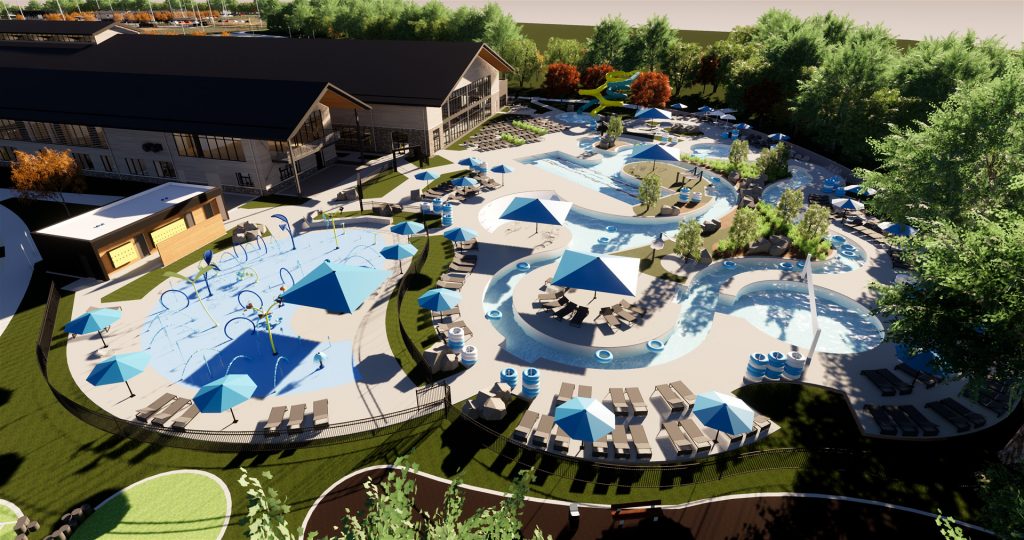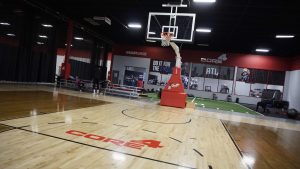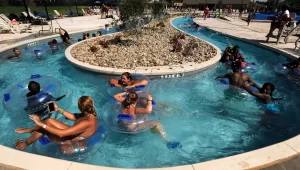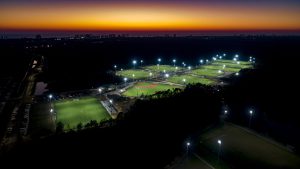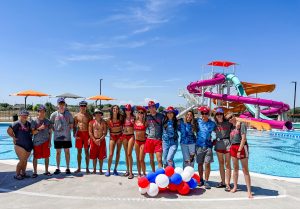The sport of running is one that involves continual growth. Even if you have the ideal body type, you must work to improve your endurance, strength, and speed, whether it’s through performing sprint exercises at the local track, logging in miles at a scenic trail park in your area, or working out in the gym in your community recreation center. Hours of work is often required to taste your version of sweet accomplishment (placing in your age group at the community 5K, looking great in the mirror, etc.) And even when the mountain is climbed, reflection and even more work is needed to stay on top.
The parks and recreation centers that host the efforts of so many runners are not particularly different in how they achieve goals and maintain excellence. However, they must also follow up setting and achieving goals with a steady review of performance and creating plans for continuous improvement. While runners don’t typically use the term “optimization” as part of their process, for parks and recreation systems it’s an essential part of serving their communities.
Whether your parks department has a few facilities or hundreds, optimization starts with a vision. The ability to examine your current assets and the existing landscape and think, “how can we better serve our community?” In order to meet the needs of residents, this question must be posed and answered. At the Sports Facilities Companies, we’ve worked with thousands of communities throughout the country and we’ve often seen the desire to optimize sparked by the following scenarios:
- Recognition of a heavy financial subsidy for an asset: There may be a strong desire to reduce the financial responsibility that an asset has placed on a community
- Under-performing programming: Programming that’s not meeting the needs of the community and is not well-attended
- Aging recreation or wellness centers: Facilities that are in poor condition will often get passed over by consumers for privately-funded ones
- Increased demand from a growing local population: As your community grows, are your facilities equipped to meet the volume and diversity of their demands?
- Voices in the community who desire change: Does your assets reflect what your community truly cares about?
This two-part article outlines a five-step framework for optimizing your parks and recreation assets. No matter how you define success for your system, this framework will position you to achieve it. We will cover steps 1 and 2 in this part of the guide with steps 3-5 coming in part two:
Step 1: Definition
Step 2: Evaluate Existing Assets
Step 3: Create the Plan
Step 4: Implement & Execute
Step 5: Perform & Report
Step 1: Definition
To take on the mantle of optimization, you must define what “optimization” looks like for your parks and rec system. The larger the role the community plays in determining what improvements are needed the more likely it is that your optimization efforts will be successful. Not only will the project be more relevant, but it will have an increased likelihood attaining much needed funding.
There are three areas where performance is often measured when determining where optimization should be focused:
Community Activation
- Community engagement: Includes the number of participants per program or venue visitors
- Reductions in crime in the surrounding area
- Placemaking/Community Pride: Measured by population growth and retention
- Sustainability: Growth as a green community or in carbon neutrality
Economic Impact
- New market spending: Including tourism (sports, event, environmental)
- Job creation: Both direct and indirect
- Economic development: Growth in the business sector
Financial Outcomes
- Property values: Increase in tax revenue from property taxes
- ROI: Operational return or subsidy from projects
- Environmental: Including rainwater retention savings
- Reducing healthcare costs: This metric is aligned with hours of activity
Reviewing overall current performance
Two methods may be used to assess performance in these areas:
- Reviewing the historical performance of the park and facility against forecast
- Reviewing qualitative data on health and social outcomes, if available
Additionally, it’s important to consider outside factors that affect performance, including new service providers entering the market and the impact of the Coronavirus pandemic.
Step 2: Evaluate Existing Assets
Once your goals for optimization have been established and you used tools like impact calculators to assess the overall impact of your parks and recreation system, it’s time to take a look at the facilities themselves.
There are four factors that dictate the performance of your parks and recreation assets. These include:
- Physical Assets
- Human Resources
- Marketability
- Financial Resources
Physical Assets
In examining your parks and recreation facilities, there are several key areas to evaluate:
- Sense of place / Wayfinding: How are your facilities defined outside of your community and among its citizens?
- Operational efficiency: Are your facilities easy to navigate for guests and employees? Is there adequate storage?
- Location and marketability of subcomponents: For events and sports facilities, where are your concessions? Do you have a retail component or other features such as climbing walls or a family entertainment center?
- Maintenance: What’s the condition of your equipment?
- Systems and software: Do they support efficient operations?
- Technology integration: Is technology supporting and enhancing the customer experience?
Human Resources
Your ability to achieve your definition of success largely lies in the abilities and motivations of your workforce. The following tools are vital to success of your human resources department
- Organizational chart
- Accountability chart
- Job descriptions
- Financial performance tracking system
- Staff development plans
- Training and review structure
Organizational Health
While the overall health of your organization feels largely intangible and hard to measure, it’s at the heart of your operation and dictates your success in every other area. If your organization doesn’t exhibit the following qualities, your optimization efforts should work to correct it:
- Accountability: Does every team member own their role and feel fully responsible for success or failure in it?
- Collaboration: Do your team members work together so that your parks and recreation asset operate efficiently?
- Aligned vision: Does everyone understand the overall vision of the organization? Are you all moving in the same direction?
- Goals & strategies: Are your strategies aligned with your stated goals?
- Performance: Are your team members continually striving to perform their roles at the highest levels?
Marketability
Your asset doesn’t exist on an island. There are plenty of privately-run companies vying for consumers. It’s critical that park and recreation organizations brand themselves and develop programming with the idea that each guest that enters their facility represents a victory over the competition. To do this, they must consider the following:
- Who is your competition: It’s crucial to understand the competitors in your market and what they offer in comparison to your facility
- What is your brand position: What’s the promise that you are making to your customers? What can they expect when coming to your facility?
- Are Your Programs: “On Trend”: Are you keeping up with current industry trends and consumer interests?
With your goals in mind and a clear answer to each of these questions, a marketing plan that aligns with both can be established.
Financial Resources
Does your parks and recreation system have the financial resources to serve your community at the highest level? Do you have the resources to compete with other service providers for consumers? The answers to these questions lie in your ability to attain the following:
- Funding sources (existing and new)
- Opportunities for partnerships
- Additional revenue streams for your assets, such as event admissions, tournament registrations, or concessions
- Community and political will
Click here for part two of this guide and if you are ready to get more out of your assets with services including recreation master planning and optimization studies, contact us at 727-474-3845.

